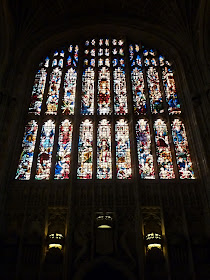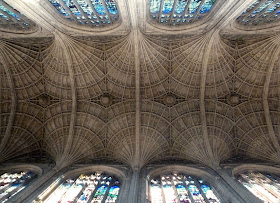Usually with traditional ballads it's impossible to know when they were written or whether the events actually took place. In this case a little judicious Googling will tell you that the events almost certainly happened much as the song reports them. The song was composed in 1646, probably in late summer or early autumn. I wouldn't mind betting that it was first performed at a wedding later that year and that the composer was the harper employed by one MacMahon of County Monaghan in Northern Ireland. How can I be so certain? The lyrics give all the clues:
The Woods Of Trugh
Out from the shady Woods of Trugh M'Kenna rides at noon,
The sun shone brightly, not a cloud darkened the sky of June,
No eye had he for nature's charms, they don't annoy his brain
As by flowery hills he makes his way and never drew a rein.
Until before him stands the tall grey tower of Glaslough Castle old
That bears a treasure in its walls more dear to him than gold,
For in it dwells his fair young love, the dark-eyed young Maureen,
Who yet, he hopes, may bless his home in the Woods of Trugh so green.
"I have come," he cried, "to see you, love, for tomorrow I must go
With my bold troopmen to Benburb, there to defend Owen Roe.
"I've come," he cried, "to see you, love, and to hear your accent sweet
Lest I might in that battle fall and we might never meet."
"Go forth, my love, my blessings, go and smite the Saxon horde,
When you return I'll be your bride without another word."
With a fond embrace they bid adieu as the evening sun went down
Behind yon western wooded hill that o'erlooks Glaslough town.
M'Kenna lightly mounts his steed at the twilight of the day,
Over Dasser Hill to Trugh's green woods he quickly makes his way;
That night he'll lead his valiant men o'er the dark hills of Tyrone
For to meet the army of the North at Benburb on the Roan.
Right well O'Neill was pleased to see these gallant mountaineers,
Who had held the Saxon wolves at bay in ancient Trugh for years,
And well they fought on Benburb's plain as the English flag went down,
And few that night escaped them toward Carrickfergus town.
It was in the autumn of the year with the berries ripe and red
M'Kenna and his fair young love in Glaslough church were wed
And never in her father's hall a fairer bride was seen
Than MacMahon's only daughter dear, the dark-eye young Maureen.
Now isn't that a nice old song?
Take care.



























































